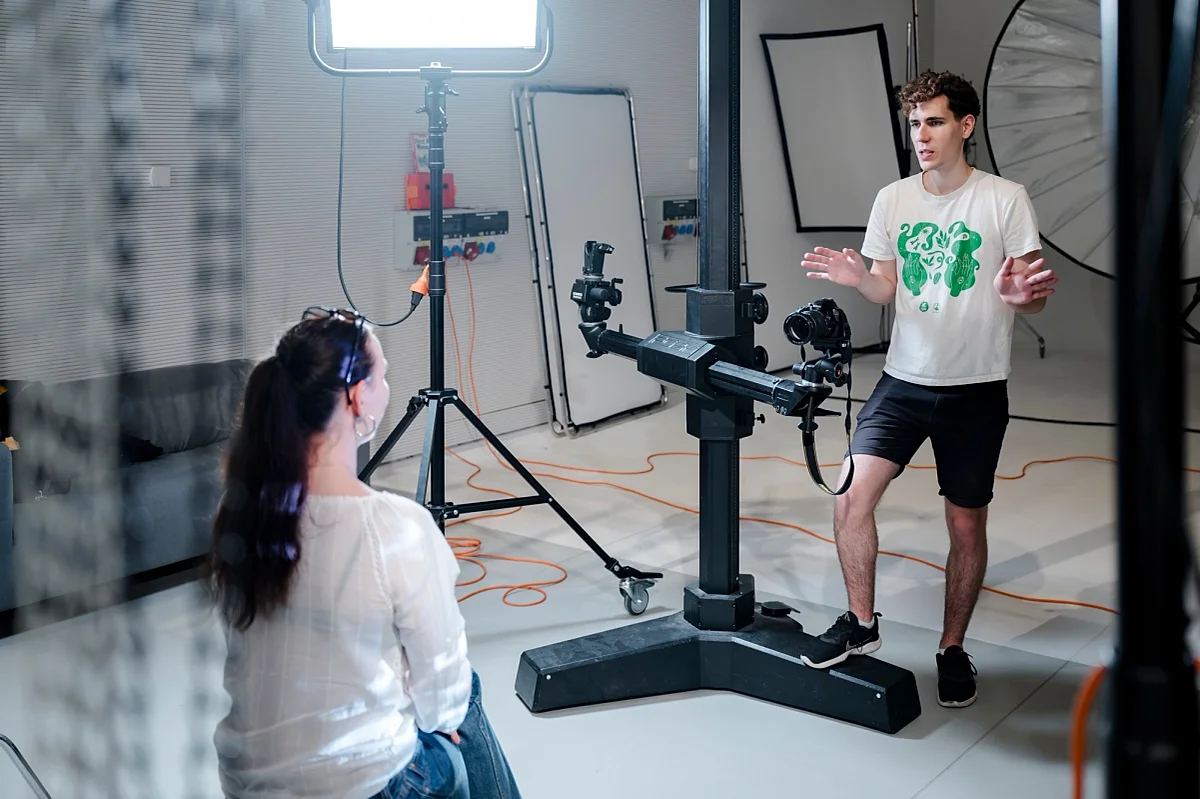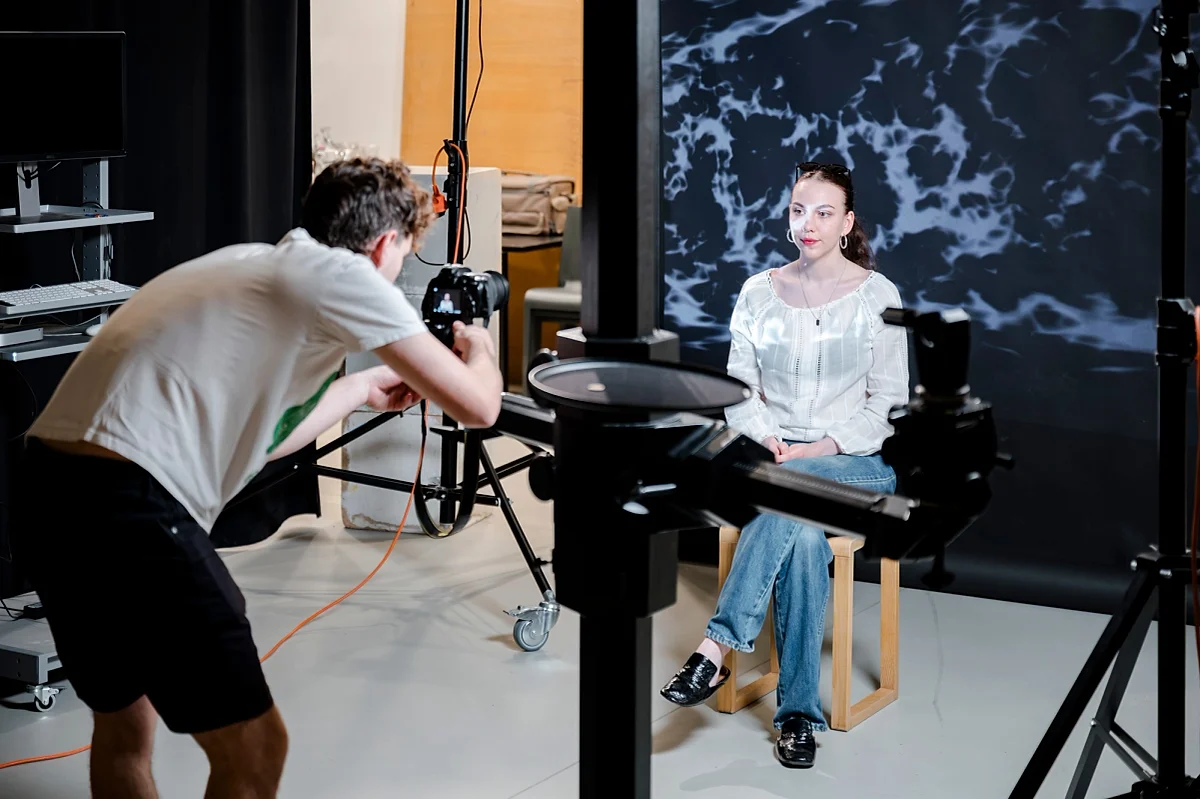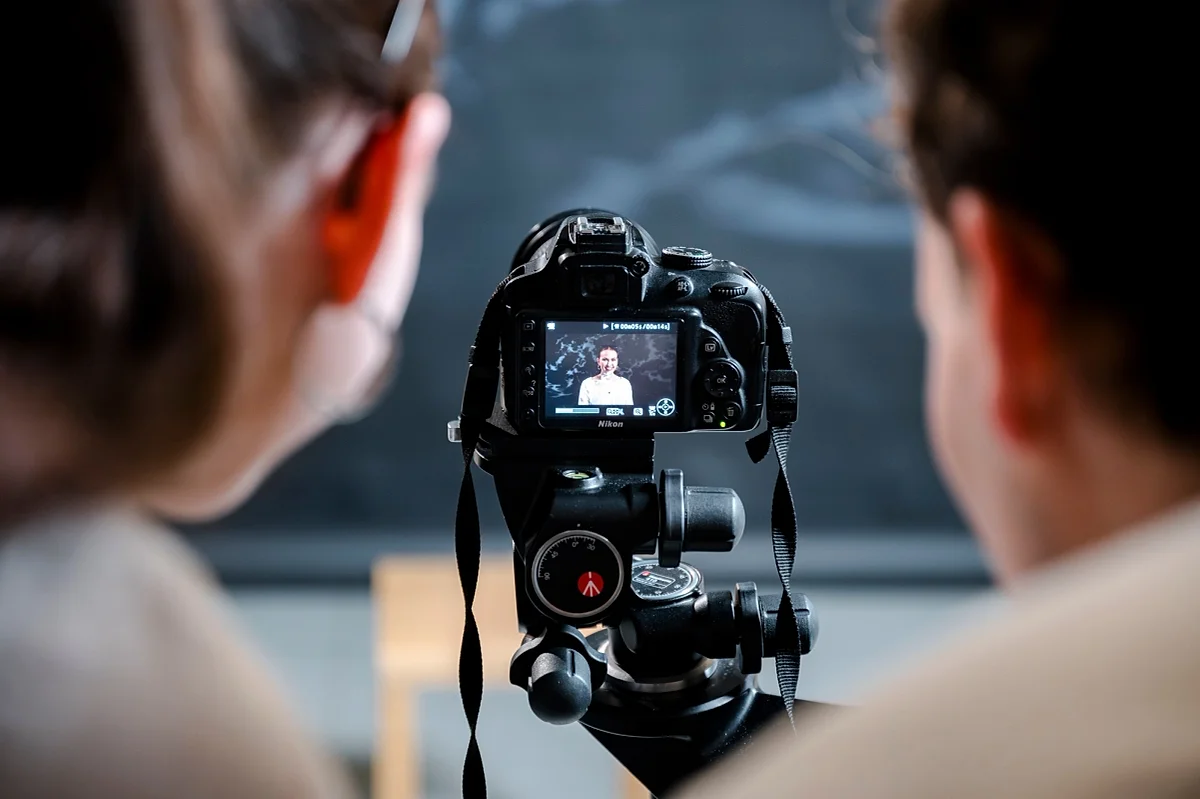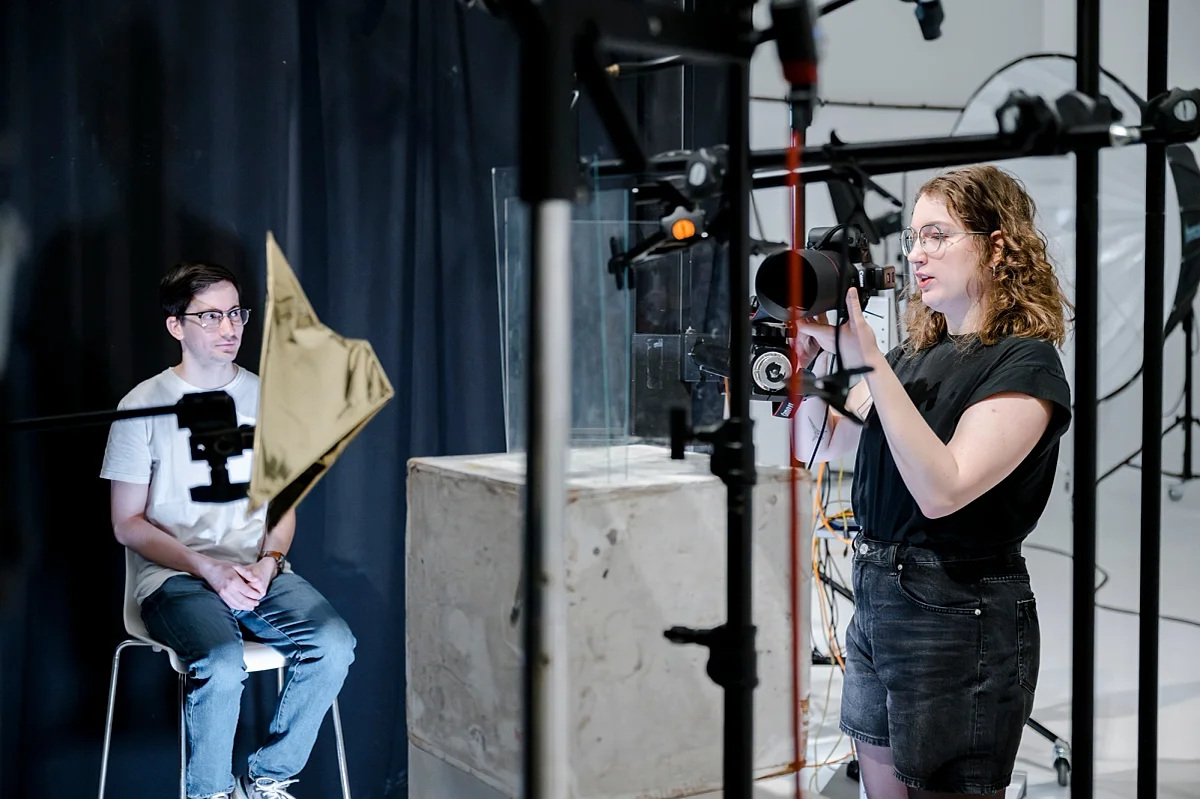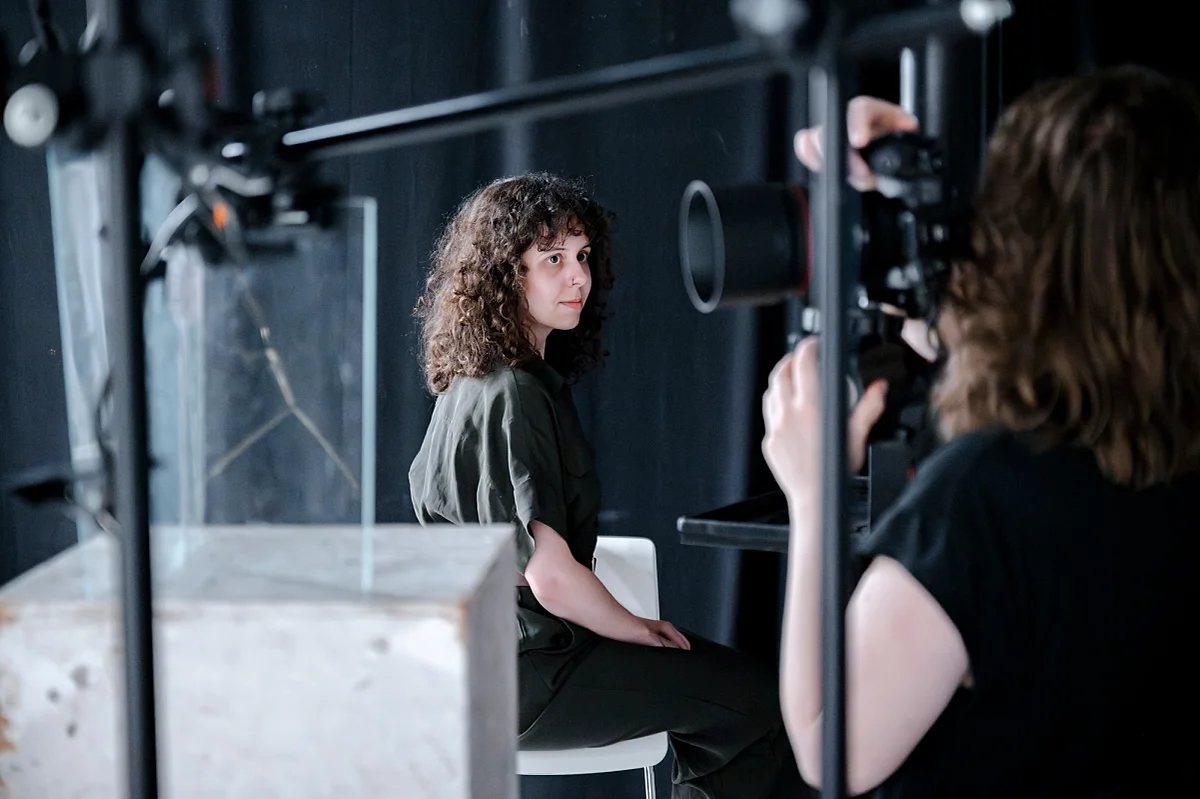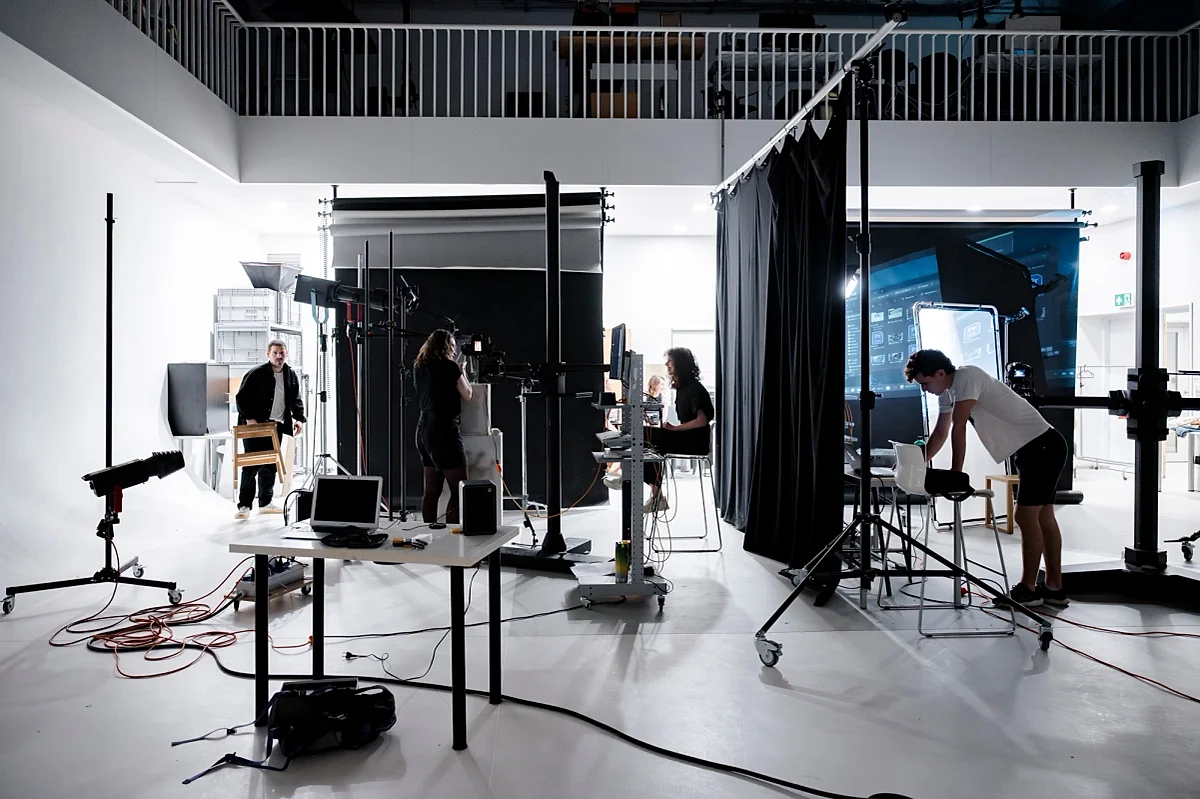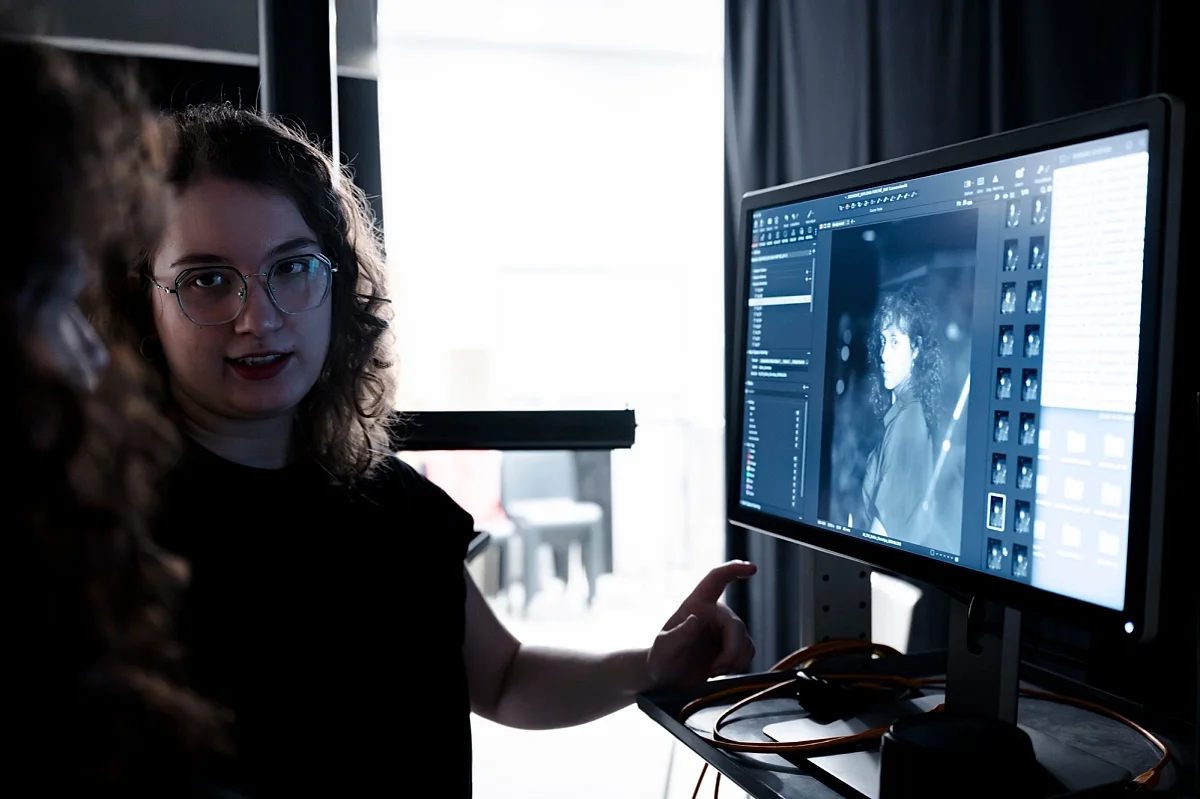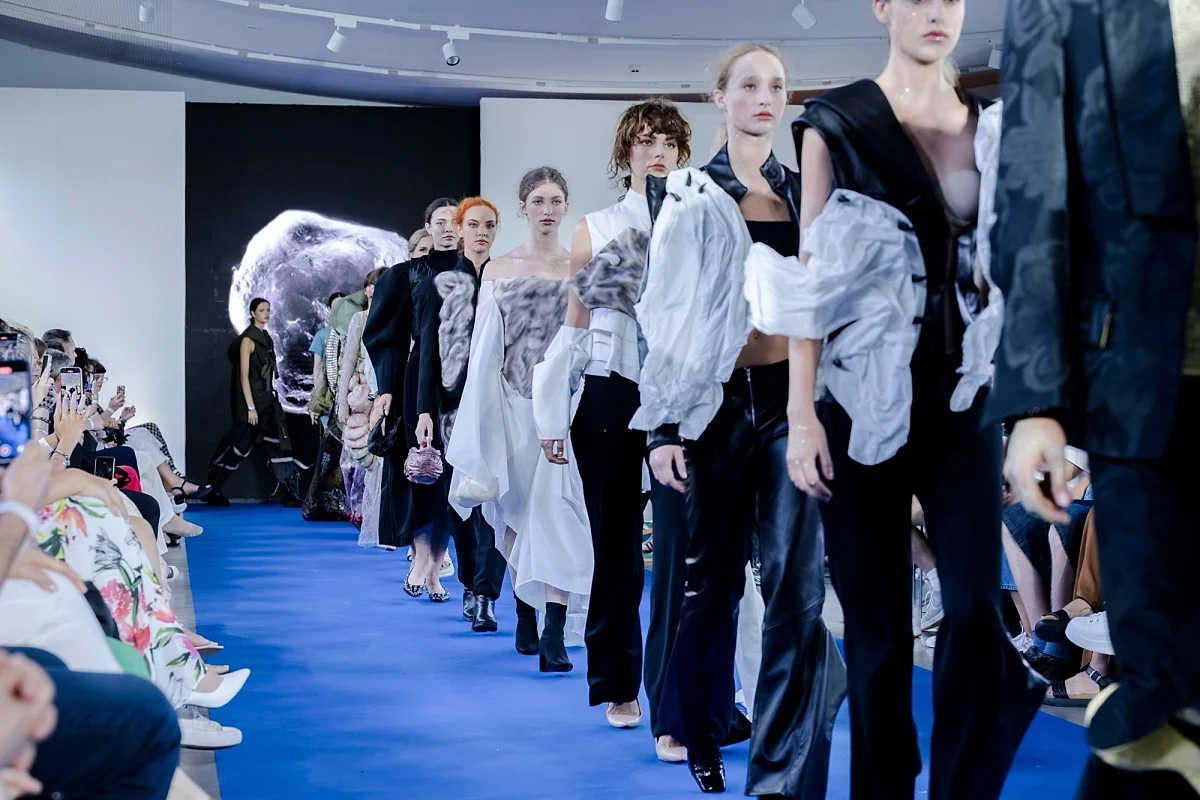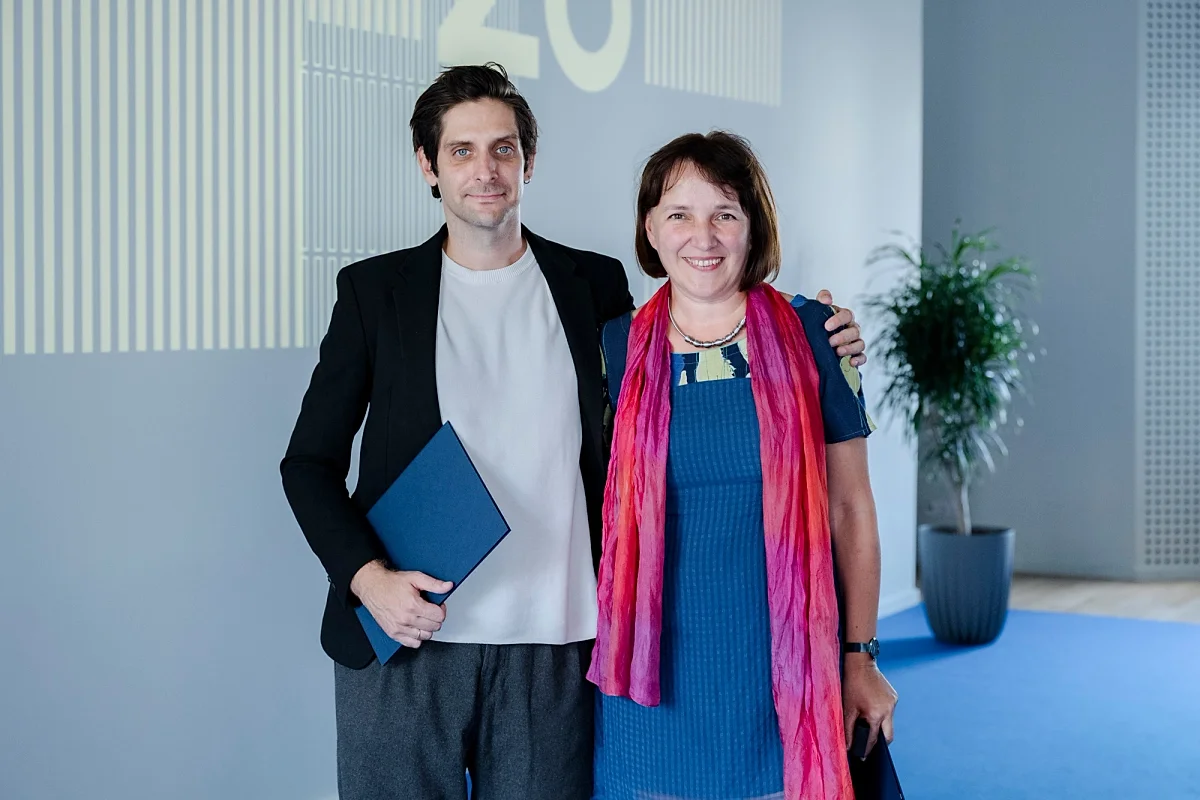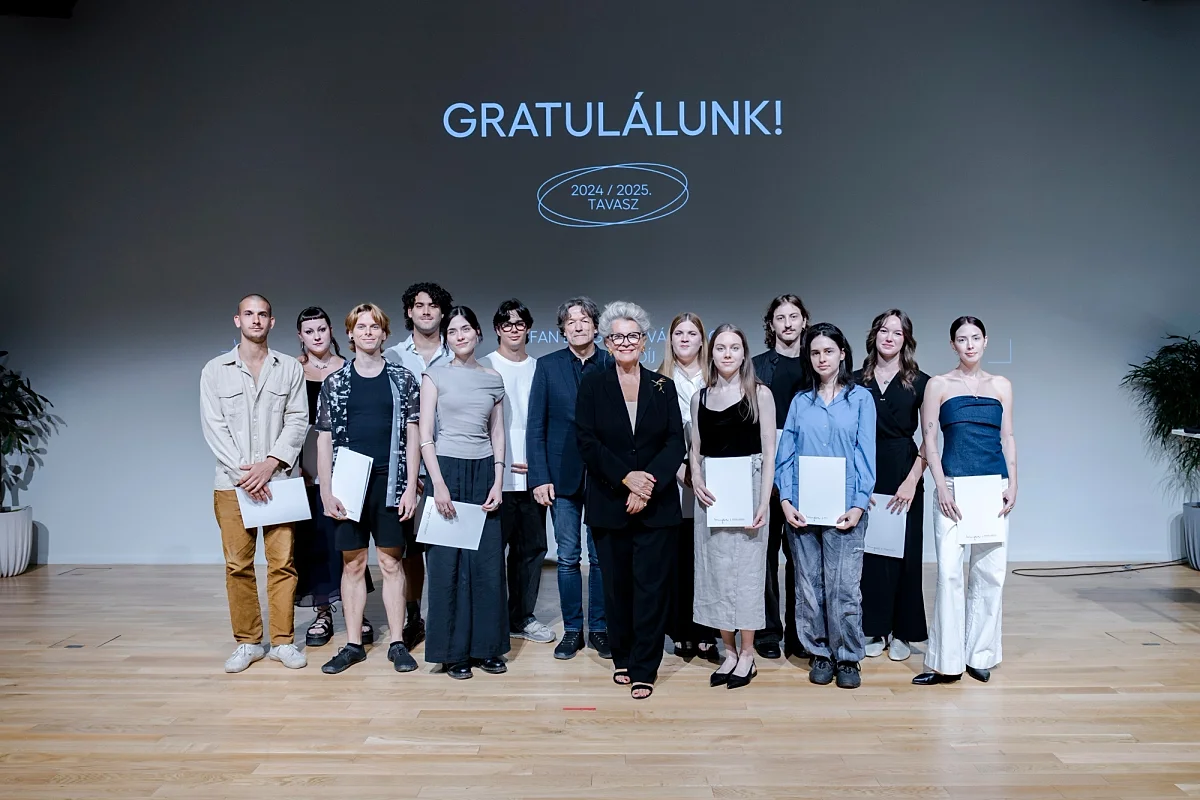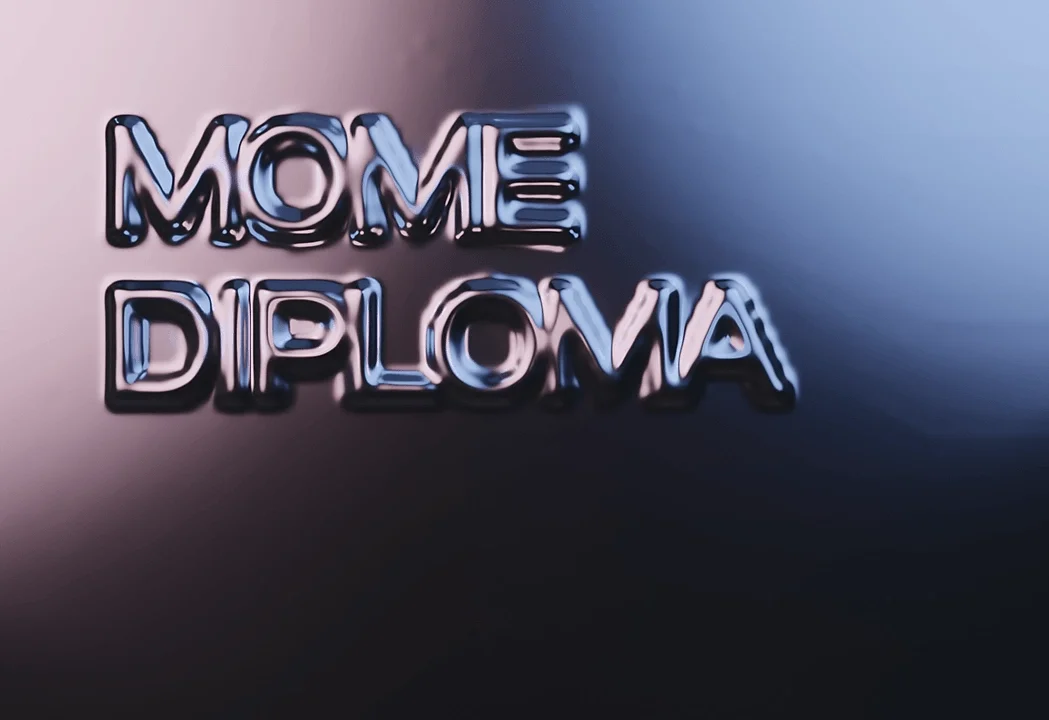
Expressive Impressions - Behind the scenes of the MOME Diploma visual identity 2024
This year’s colour-gradient, light-effect-based textured visual identity was designed by Graphic Design MA student Réka Lantos along questions such as what impression we make on others and what marks the graduating designers leave behind.
“Leaving marks has become a key concept in design, leading me to move beyond 2D and explore the plasticity of surfaces. I experimented with 3D surfaces that mimic printing techniques, creating the embossing aesthetics on the letters in Blender. For me, the raised relief effect is associated with the concept of expression, which is an important element of the University's communication, including the interfaces we show and the image we present to the world. As a result, this visual identity was recreated when developing the main graphic identity. I designed 3D letters covered with a drape. This covering and uncovering represent a metamorphosis that the University's visual identity undergoes multiple times each year as continuously being shaped by new events. I used different colours for the lighting effect to differentiate between Master's and Bachelor's programmes, and combined them on shared interfaces”, explained Réka, who also drew inspiration from the works of Jeff Koons.
The elements of the graphic identity were translated into the portrait photography concept by MA students Daniella Grinberg and Benjámin Melegh. The duo has prior experience, having taken the diploma portrait photos back in 2022 as BA students. This time, Daniella was in charge of creating the still images of the MA students, and Benjámin the moving images of the BA students.
"The photo sessions always coincide with the period of the end-of-semester exhibition and the completion of the diploma project. Most students turn up for their session rushed, tired, and stressed out about their defences. These are the primary practical considerations we take into account when designing the setting. Each year, it's a challenge to create authentic and diverse images of hundreds of people in a relatively short time that also reflect our individual styles as artists”, shared Benjámin and Daniella.
“To match the metallic effect of the graphic identity, we designed a setting for the photoshoot using glass panels and metallic surfaces that reflect different lights from the right angles. For the still images, students were asked to look straight ahead through a transparent glass structure. They couldn't see themselves or the camera, and I photographed their reflections and gave instructions from the side. This image-making method and the situation it generates are, for me, comparable to the self-brand building done after finishing university”, Daniella explained. For the videos of the BA graduates, animations reflecting the shiny, metallic effect of the visual identity were created and projected onto the students.
The distinctive diploma visual identity will be displayed at the currently running defences, the Diploma Exhibition open for over one week, and the graduation ceremonies.
